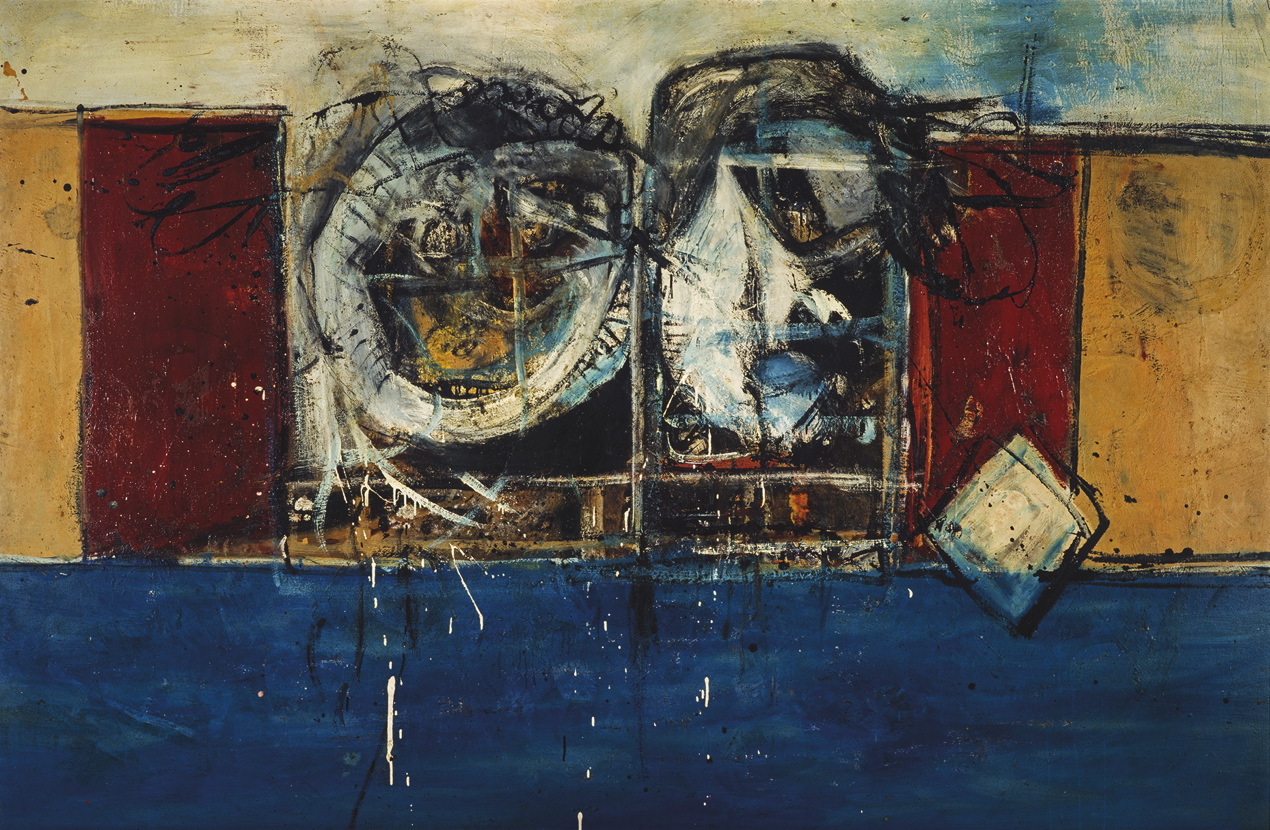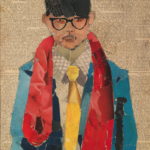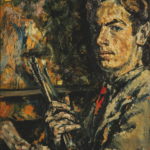During the 1950s Scottish artist Alan Davie was feted by Rothko and Pollock and the enfant terrible of British art. He was also a polymath with a flamboyant lifestyle revolving around painting, playing saxophone, writing poetry and flying gliders, which saw him frequently featured in magazines and newspaper supplements. Davie was also a pivotal influence on David Hockney.
Now, for the first time since 1971, Davie and Hockney will co-headline an exhibition. Focusing on their early work, the show will soon open at the Hepworth in Wakefield, a city with special significance in the duo’s artistic relationship. It was here, at the old Wakefield City Art Gallery in 1958, that Davie had his first solo exhibition, an event visited by Hockney, then a 20-year-old student.
“It’s difficult to imagine how it was for Hockney back then, being taught art in that particular way it was taught in the 1950s at Bradford School of Art, walking into an exhibition of Davie’s work,” says Eleanor Clayton, curator of the forthcoming Alan Davie and David Hockney: Early Works show. “These incredibly large, colourful, abstract paintings had been causing such a stir. Davie’s early work was considered chaotic, surprising and alarming and had a profound effect on the young Hockney.”
Shortly after this visit to Wakefield, Hockney moved south and began studying at London’s Royal College of Art. There he was also to leave behind figurative painting in favour of more abstract work, adding colour, coded text and symbolism – mirroring Davie’s artistic development.
-
![]()
-
David Hockney, Self Portrait 1954
-
![]()
-
Alan Davie, Self Portrait,1937
Early Works will bring together 45 paintings and drawings, which chart the parallel creative paths each artist took, from figuration to abstraction. The exhibition will set all this within the context of the 1960s counterculture, a time when, according to Clayton: “British art was flourishing and truly becoming part of popular culture, not simply something for the elite. It’s easy to take a lot of contemporary art for granted now but back then artists were genuinely breaking new ground.”
Of course, the two artists then encountered wildly differing fortunes. Hockney went on to become a global superstar – a painting selling at auction for $90 million [£73 million] last year, his swimming pool works familiar to all, a strong personal image rendering the man instantly recognisable – whilst Alan Davie slipped from the public gaze.
“I think Davie tired of having this high profile lifestyle that was perceived as incredibly glamorous and became rather reclusive,” says Clayton. “He moved out to Hertfordshire very early on and did seem to become increasingly shy which, rightly or wrongly, impacted on how his work was perceived amongst collectors and critics. Of course Hockney has stayed in the centre of the art world, both in London and Los Angeles, and gone on to be massively successful in everything he’s done.”
Davie died in 2014, aged 93 – just a day before an exhibition of his work opened at Tate Modern – while Hockney, now himself in his eighties, continues to work prolifically.
“It would be nice if some of the visitors attracted to this exhibition by the Hockney name came away also inspired by the work of Davie,” says Clayton. “Possibly these people may not have even heard of Davie before. Things could have been so different though.”
Alan Davie and David Hockney: Early Works, is at the Hepworth Wakefield, 19 Oct-19 Jan 2020 (hepworthwakefield.org)
Main image: Alan Davie, Seascape Erotic, 1955
Like the Big Issue North on Facebook





Leave a reply
Your email address will not be published.